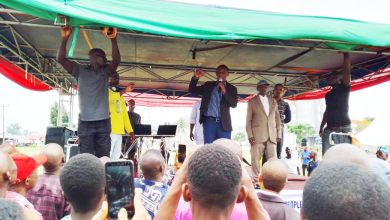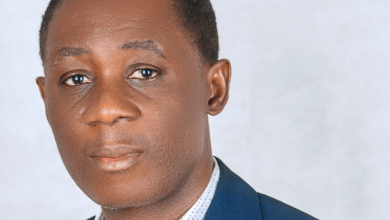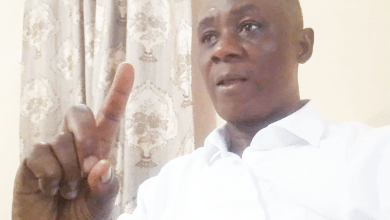The Ogoni Cleanup is Full of Lies
In the last 6 years, virtually every public content on Ogoni has touched on or had been exclusively focused on the cleanup exercise; an intervention programme of the Nigerian government to remediate the devastated Ogoni lands. This task is being undertaken by the Hydrocarbon Pollution Remediation Project (HYPREP), a pseudo department of the federal ministry of environment.
For those who may not be very familiar with the situation in Ogoni, an indigenous community in south eastern Nigeria, an environmental audit had been ordered by the Nigerian Government based on the recommendations of the U.N fact finding mission which visited Nigeria after the state murder of Ken Saro-Wiwa and nine others in November 1995. The United Nations Environment Programme (UNEP) undertook the audit exercise and found alarming levels of pollution in Ogoni.
HYPREP was set up to address this problem. In 2016, it changed its name from the Hydrocarbon Pollution Restoration Project to Hydrocarbon Pollution Remediation Project. The acronym, HYPREP, remained unchanged but switching from a “pollution restoration project” to a “pollution remediation project” gave hopes that the new structure could better be knowledgeable about the task it faced.
HYPREP’s first task was to launch a robust flag off for the cleanup programme. We welcomed the move with hopes even though we understood that it was unnecessary in an environment where lives were on the verge. The flag off was followed by a dead silence after which the government undertook some face saving measures with laying the foundation for the construction of the Center of Excellence and the Integrated Soil Management Center. All these poured in credit to the government. The then environment minister, Amina Mohammed got a U.N job and left. Then the downturn set in. The site for the center of excellence and integrated soil management later turned into forests.
The Shame of HYPREP
The first major task that was undertaken by the governing board of HYPREP is the award of contracts for the cleanup. All emergency measures were neglected. When we raised objections, they conducted some mobile health services offering people paracetamol and flagyl and claiming they are undertaking a health services provision. Instead of designating specific hospitals, equipment and staffing them to conduct and sustain the health audit and rehabilitation programme, they chose a mobile service which did not serve the intentions of the UNEP recommendations. Only God knows how much they spent on that.
Till date, the Ogoni people still live on contaminated water. Death rates are rising especially for people above 50 years and there is no hope for a redress.
The biggest fraud of the government cleanup exercise is that the UNEP investigation downplayed the level of pollution in Ogoni. While there were over 200 polluted sites, the UNEP investigations covered only 69. This means that the sample represented less that 30 percent of contaminated sites. Clearly, a large portion of the devastation was concealed from the public suggesting that the report could have been more damaging than presented by the UNEP..
Not surprising, he who pays the piper dictates the tune. Shell paid for the investigations and we also saw an attempt to protect the company right from the initial report which blamed the Ogoni people for virtually all the spills. Shell will always deny responsibility for all oil spills. In 2022, a new project coordinator for HYPREP acknowledged that some 150 polluted sites were not captured in the UNEP report. The approach to dealing with these 150 sites will be to cover the spills with soil like we have seen in many places where remediation is said to be taking place.
The Endless Search For Water
I recently visited the K-Dere community in Gokana kingdom. Shockingly, there are no efforts to provide safe water for the K-Dere people on whose lands the first oil spill in Ogoni occurred some 50 years ago. The land is yet to be recovered and remains unusable. K-Dere is also the host to some 75 percent of the oil produced in Gokana kingdom and some of the worst cases of Shell”s devastation in Ogoni can be found in K-Dere. There is obviously no consideration for water in K-Dere up till this moment. Unfortunately, the situation in K-Dre is not different from what is obtainable in all Ogoni.
Underground Water Contamination
Though not highlighted in the UNEP report, a study commissioned by HYPREP and undertaken by John Hopkins University indicated that underground water pollution in Ogoni travels by 1.5 km annually. This implies that all of Ogoni’s underground water is contaminated and there are no safe zones. So, HYPREP’s specific cover ups and remediation claims are only cosmetic, deceptive and a waste of resources.
The Contract Scam
Do I need to mention that HYPREP awarded their so called cleanup contracts to unqualified firms, some of which where registered to process palm oil in northern Nigeria, some where incorporated just less than two years before the contracts were awarded when their own standards have stated that contractors must have at least 10 years experience in the field. Or do I need to tell you that HYPREP has always hastily awarded contracts running into billions of Naira just before every general election?
So Is There Really a Remediation Going on in Ogoni?
It is instructive to note that there can be no remediation without compensation for the destruction of people”s sources of food and livelihood. Unfortunately, the UNEP report did not recommend any form of compensation for communities whose sources of livelihood were destroyed. The big question we continue to ask is how HYPREP intends to remediate without compensation for livelihood losses? The straight answer is that there can be no remediation if losses are not compensated for. So why did the UNEP”s definition of remediation exclude the very important component of compensation for the damages done to the environment and livelihood losses? It is simply because a brutish, conscienceless monster called Shell Petroleum Development Company of Nigeria Limited is involved. Whenever Shell is involved, things never go right.
Some UNEP Findings and Recommendations:
Amongst others, here are some highlights of the UNEP report:
It will take 30 years, or more, to remediate the Ogoni lands once pollution stops.
The pollution in Ogoni has extensively contaminated underground water.
There were no clean water sources in Ogoni.
The air was polluted.
The Shell Petroleum Development Company, the drilling firm that operated in the area failed to uphold even the standards it set for local operations, in the conduct of business in Nigeria, thereby permitting massive oil spills that destroyed vast expanse of lands.
The report highlighted the danger the pollution posed to human and aquatic lives as well as the entire environment and noted the case Isisioken in Eleme where pollution levels were 900 times higher than the U.N acceptable.levels.
That it required at least $1billion to commence the remediation process.
Given the enormity of the pollution, the UNEP recommended some emergency measures including, but not limited to the following:
Prevent people from access to contaminated water wells by marking them.
Provision of alternative sources of clean water..
Conduct a health audit to address emergencies and follow up on health status of residents.
Survey drinking water wells and take appropriate measures where necessary.
Conclusions
I hold strongly that the entire Ogoni cleanup exercise is full of lies and distortions. A fraud from which the UNEP and Shell cannot be exonerated. I further hold that the UNEP has deliberately distorted the information upon which its findings and recommendations were based to downplay the gravity of Shell’s crimes in Ogoni. This is the truth.
About the author:
Fegalo Nsuke is president of the Movement for the Survival of the Ogoni People (MOSOP). He wrote from Abuja, Nigeria.




